1. Treat is the second most popular out-of-home mission
2. Proximity is the main driver for choosing a food-to-go outlet
3. Drink only occasions in retail have driven market growth in 2023, up by +2.3pp
4. Retailers should look stateside for treat trends
5. Tango Ice Blast has lost its fizz
6. Almost half of new FTG products responded to health-led trends
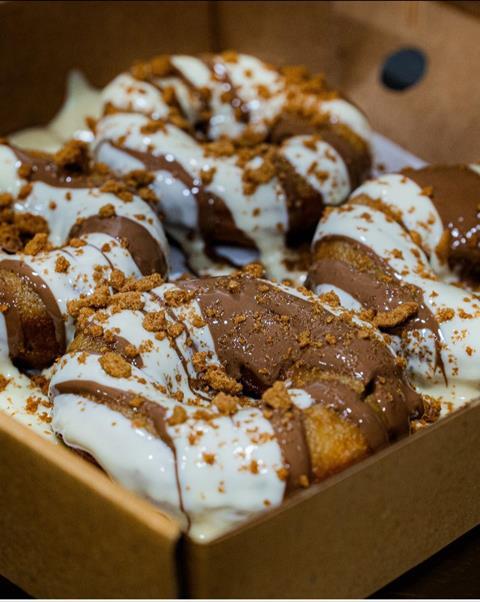
1. Treat is the second most popular out-of-home mission
Fancy a #littletreat? Gen Z’s drive to document how that mid-workday doughnut, or Saturday morning milkshake, cheers them up has translated to a hashtag with over 41.4 million TikTok views and counting. But while showcasing your sugar choices on social is relatively new, experienced retailers will recognise UK shoppers’ urge to survive lean times by mainlining sugar from recessions long past.
Lumina reports that the move towards affordable luxuries in food-to-go, fuelled by the cost-of-living crisis, is driving demand. Its stats show how necessity-driven food-to-go missions have dropped, while the share of treat missions grew 1.9% from 22/12/23 to 21/01/24.
Adam King from family-owned Woodlea Food Ingredients, which sells doughnut, ice cream, waffle and crepe making equipment, says that this effect has accelerated as a growing range of retail outlets target treats.
“What we’re seeing is that everything is amalgamating in food-to-go,” he says.
“On the High Street you no longer just have a bakery, a convenience store and a dessert place all doing different things. Convenience Stores are trying to squeeze as much profit out of their spaces as possible, so they’ll have a food-to-go offer which touches on all three. You’d have never seen a doughnut machine in a Premier 10 years ago – but now the margins you can make mean more retailers are getting bakery and dessert-style offers in their stores. It’s become massive.”
This growth means c-stores are looking to evolve their offer to keep up with new trends. Right now Adam Hogwood, manager of Budgens Broadstairs in Kent, plumps for Dunkin’ Donuts, praising how easy it is to defrost the packs and get them out on the shop floor.
“Doughnuts always do well with customers – everyone goes for some at one point or another don’t they?” he says.
“There’s now so many options available. So you can have them in the bag or you can have the mini doughnut balls in shaker cups. A lot depends on where you can place them around the store – you want the impulse locations that bring customers in so you can get the biggest return on them.”
Meanwhile, Dee Sedani, who owns One Stop stores in Derbyshire and Staffordshire, has invested in a donut machine. “The margin is great,” he says. Four donuts have a cost price of 80p and he sells them at £1.99 or £3.99 for a luxury box with extra toppings (see pic). He’s even combined donuts with ice cream to create his own Donut Sundae, to really stand out from the crowd.

2. Proximity is the main driver for choosing a food-to-go outlet
Thanks to home working, more rail strikes and fewer commutes, c-stores have won a growing share of food-to-go as shoppers rediscover the high-quality offer available close to home.
But the big players aren’t resting on their laurels. According to Lumina Intelligence, retailers should expect strong space growth in the market (+0.7% to 152,783 outlets) driven by kiosk-style offers and drive-thru formats.
This could mean more suburban Gregg’s drive-thrus stealing some of c-stores’ treat sales – not to mention the 100 new Creams dessert cafes set to open in Tesco stores selling 24 different flavours of ice cream.
In fact, Lumina Intelligence predicts that c-stores’ share of food-to-go will “fall back slightly” from this year – due in part to the growth of competing outlets (plus more people going back to the office).
Treats is an important part of this market. So to fully fight back, c-stores need to offer something distinctive while maintaining quality and availability.
“The question is: ‘what can you plug into your stores that provides an opportunity to offer something different from the rest?” says Dee.
For Dee this means installing what he calls “the first ever protein milkshake machine in the UK.”
“You can serve yourself and it’s £2.49 for a 16oz cup,” he says.
“We’ve just set it up and we’ve been giving a few away as we’re doing it. Like I say, it’s early days, but it seems to be going well.”
As well as the shock of the new, later opening hours could also help c-stores win the treat wars.
“The advantage we have is that we’re a 24-hour site so we serve through a hatch at night-time and can put the treats up against the window,” says Adam.
“Then the, shall we say, ‘creatures of the night’ come in and buy what’s in there.”

3. Drink only occasions in retail have driven market growth in 2023, up by +2.3pp
As more shoppers seek to cut spend by brown-bagging lunch, drinks have emerged as the new stars of food-to-go with Lumina Intelligence recognising them as a ‘key driver’ of the market. Big name brands like Costa have helped add interest to drinks with Instagrammable serves like its Hot Milkshakes. So what can c-stores add?
The protein shakes might be new experiment for Dee – but he knows he can fall back on his F’Real machine.
“For us, F’Real is a product which is a good and stable seller,“ says Dee.
“It basically sells all year round.”
In his store Adam has tried out Fwip gelateria, but found that sales “weren’t that great”. He says: “In the end we swapped it out for Reese’s Slush – and in the colder months we turned it into Reese’s Hot Chocolate – which has done exceptionally well.”

4. Retailers should look to the US for treat trends
If you’re looking to go large on treats, it’s sensible to set your sights on the land of Trump and Tater Tots.
“The market is being led by American-style products that look good on Instagram,” says King.
“During Covid-19 we saw real growth in brands active on social media that didn’t have a physical shop but would send products anywhere in the country. And they have that Instagrammable look and feel where people just want to take a picture and put it on the ‘gram. Consumers aren’t just buying with their stomachs but with their eyes – and that’s a big trend.
“Products like sponge cakes will always be part of the country’s traditional baking heritage. But people are now saying to us ‘why don’t we try a cookie pie or a stuffed cookie?’.”
To help brands and retailers, Woodlea is setting up a brand new e-commerce offer so they can fully meet the market. Kings adds that there’s also an Italian influence coming through too – with the rise of pistachio.
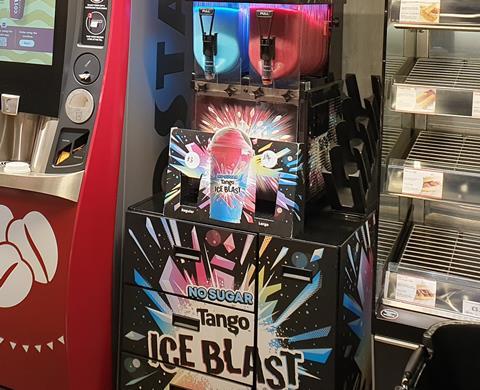
5. Tango Ice Blast has lost its fizz
It’s not all sweetness and light in the treat segment. Regular Convenience Store readers will know that Frozen Brothers, the brand behind Tango Ice Blast, has given many retailers a headache. Sandeep Bains, whose Store Journey we have been documenting, has just got rid of his machine, describing the customer service as “terrible”.
Dee couldn’t agree more. “When Tango Ice Blast first came out, it was limited to just a few retailers,” he says.
“But then the market became saturated – everyone had it. And the service levels are diabolical, you can have a machine out of action for half the year because their service levels are absolutely crap.”
Adam says that so many parts have been replaced on his machine it’s now like “Trigger’s Broom”.
“We’re just fed up of it,” he says.
“There’s other options out there, like the Calippo machine, which I think will take over the market. They’ve been victims of their own success to a degree: the branding was great and people associated it with places they’d treat themselves, like cinemas. But they just can’t keep up with the engineering and response side of the business.”
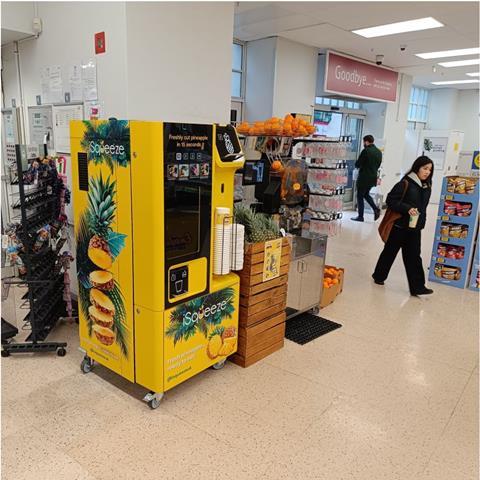
6. Almost half of new FTG products responded to health-led trends
On paper, health and c-store drinks and desserts sound like an unlikely coupling. Yet, the market is increasingly turning towards what Lumina Intelligence calls ‘nuanced health’ – products that meet high protein, keto and plant-based diets.
And that can encompass treats. Adam relates that, with his seaside location, he has to meet the needs of the foreign students coming to town, as well as tourists.
“We need to update our treat offer based on the trends that they’re looking for,” he says.
“And what seems to have changed is that they’re looking for anything vegan. It really seems to have taken off big time in Europe where in England it feels like we’ve already reached the crest of the vegan wave.”
At a basic level that means making sure milkshakes and coffee to go can be provided with animal-free alternatives. It also opens up the possibility to signposting health elsewhere instore.
“Consumers for 2024 are opting for healthier products and trying to avoid drinks and dessert machines with added sugar/preservatives and other nasties,” says Elias Ebert, managing director at iSqueeze.
Ebert says that the iSqueeze machine offers shoppers “the added theatre of going in store and serving their own juice – seeing the fruit provided in each bottle shows the freshness.” He also claims the machine can generate an average £2,000 extra in revenue for stores every month.
In January 2024 iSqueeze expanded its offer with its Isla machine, which offers pineapple sliced on the spot infront of consumers. The machine was recently installed alongside a fresh orange juice machine at Tesco Bishopsgate in London (pictured).
For c-stores, it’s a world away from the familiar milkshakes and giant cookies. But the very fact it exists shows that the market is moving forward quickly, and if c-stores don’t take food-to-go opportunities sharpish, the big operators will.

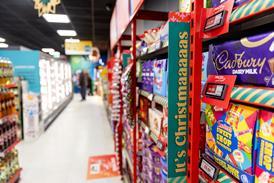







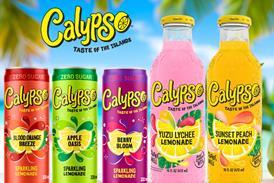



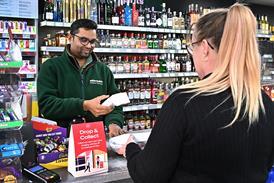







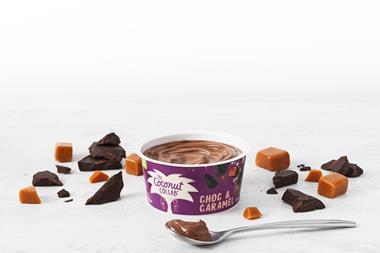
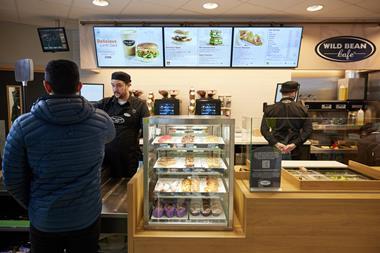
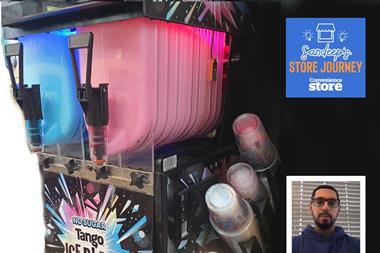
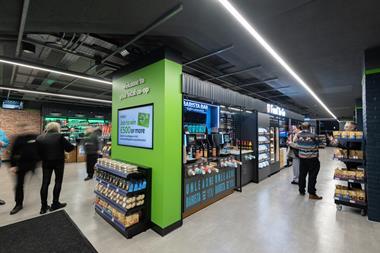
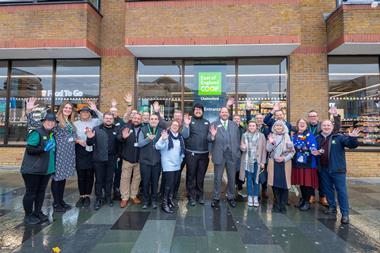
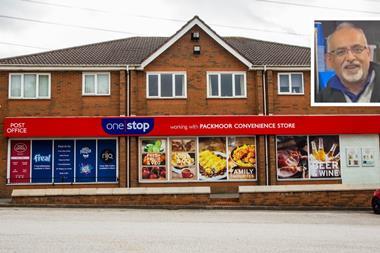

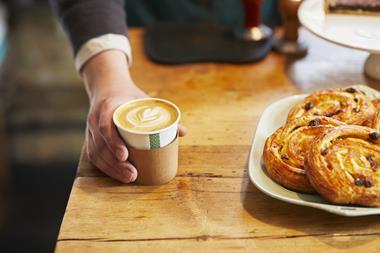




No comments yet